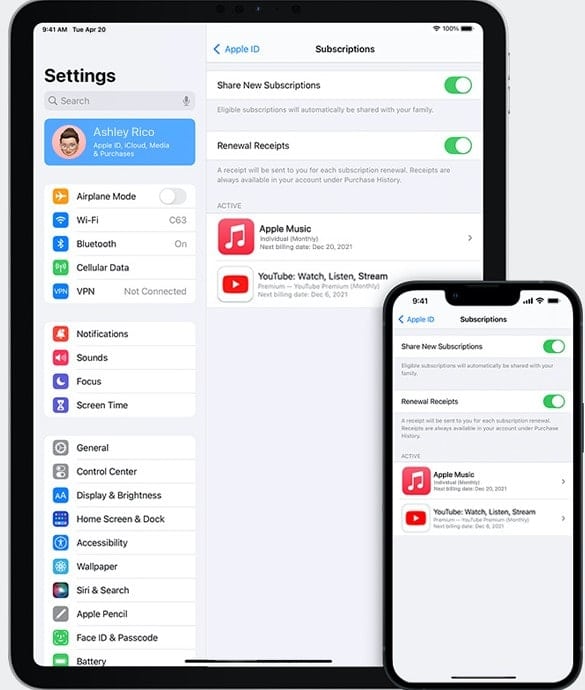
Microsoft has introduced a new termination policy targeting underperforming employees, with an expected 1% – 5% of employees on the chopping block. The tech giant is now terminating jobs with immediate effect and without severance packages. This approach marks a significant shift in Microsoft’s employment practices, emphasizing performance-based job cuts.
Affected employees face an abrupt end to their employment, losing access to health care and other benefits immediately upon termination. The company’s termination letters indicate that future reapplications to Microsoft will be evaluated based on previous performance and the reasons for dismissal. This policy change follows Microsoft’s earlier layoffs in 2023, which saw around 10,000 job cuts across various departments.
The latest round of terminations appears to be part of Microsoft’s ongoing cost-cutting measures. The company has targeted several divisions, including its security department and cloud-related teams like Azure for Operators and Mission Engineering. These actions reflect Microsoft’s efforts to streamline operations and improve efficiency in a competitive tech landscape.
Understanding Microsoft’s Evolving Layoff Strategy
The Shift in Microsoft’s Approach
Microsoft has recently updated its layoff procedures. The company now appears to be implementing a stricter approach, particularly when it comes to performance-related terminations. This change has garnered attention due to the absence of severance packages for those dismissed for not meeting performance expectations. This differs from traditional layoff scenarios where severance is often provided. The new policy also involves immediate termination, meaning employees lose access to company systems and premises on their last day.
Impact on Employees
This policy shift has raised concerns about its potential effects on employee morale. The lack of severance and the immediate termination process could create a sense of insecurity among Microsoft’s workforce. Employees might worry about the implications of not meeting performance goals. Furthermore, Microsoft’s indication that past performance, including reasons for termination, will be considered in future applications could make it harder for former employees to return to the company.
Comparing Layoff Policies
It’s useful to compare Microsoft’s new policy with more traditional approaches. Typically, companies offer severance pay, which can include several weeks or months of salary, along with benefits continuation. This cushion helps employees transition to new jobs. The table below highlights some key differences:
| Feature | Traditional Layoff | Microsoft’s New Policy |
|---|---|---|
| Severance Pay | Often Provided | Not Provided for Performance-Related Terminations |
| Termination Timing | May Allow for Transition Period | Immediate |
| Impact on Future Employment | Less Emphasis on Past Termination Reasons | Past Performance and Termination Considered |
The Bigger Picture
While these changes are significant, it’s important to note that they appear to be focused on performance-related issues. Microsoft has indicated that these terminations, though impactful for the individuals involved, are not expected to drastically alter the overall employee count. The company often backfills these positions. This suggests a focus on optimizing performance and efficiency within the existing workforce.
Potential Industry Trends
Microsoft’s move could potentially influence other tech companies. If this approach proves effective in terms of cost savings and performance management, other organizations may consider adopting similar strategies. This could lead to broader shifts in how companies handle layoffs and performance issues. It also raises questions about the long-term impact on employee relations across the tech sector.
Legal and Ethical Considerations
The new policy raises legal and ethical questions. Employees might challenge the fairness and legality of terminations without severance, particularly if they believe the performance standards were unclear or unfairly applied. The long-term consequences of this policy, both for Microsoft and the tech industry, remain to be seen.
Navigating Performance Expectations
For Microsoft employees, this policy underscores the importance of understanding and meeting performance expectations. Employees should actively seek feedback from their managers and take steps to address any performance gaps. Proactive communication and a focus on continuous improvement are crucial in this environment.
Focus on Skills Development
Given the emphasis on performance, employees should prioritize skills development and stay up-to-date with industry trends. Investing in training and acquiring new skills can enhance job security and career prospects. This becomes even more important in a climate where performance is closely monitored.
Managing Financial Uncertainty
The lack of severance pay highlights the need for personal financial planning. Employees should have an emergency fund to cover expenses in case of unexpected job loss. Financial preparedness can provide a safety net during times of uncertainty.
Understanding Your Employment Agreement
It’s crucial for employees to thoroughly understand their employment agreements, including terms related to performance expectations, termination procedures, and severance policies. Knowing your rights and responsibilities can be beneficial in navigating challenging situations.
The Importance of Documentation
Employees should maintain records of their performance reviews, feedback from managers, and any communications related to performance expectations. This documentation can be valuable in case of disputes or misunderstandings.
Seeking Legal Advice
If an employee believes they were unfairly terminated, they should consult with an employment lawyer. An attorney can assess the situation and advise on potential legal options. It’s important to seek legal counsel promptly to protect your rights.
Employee Assistance Programs
Many companies offer Employee Assistance Programs (EAPs) that provide confidential counseling and support services. These programs can be helpful for employees dealing with stress or anxiety related to job security or performance concerns. EAPs can also offer resources for financial planning and career development.
Beyond Layoffs: Strategies for Career Resilience in the Tech Industry
The current climate in the tech industry emphasizes the need for career resilience. Beyond the immediate concerns of layoffs, professionals should focus on building skills, networking effectively, and adapting to the evolving demands of the market. This includes staying current with technological advancements, developing strong communication and collaboration skills, and cultivating a proactive approach to career management. Building a strong professional network can open doors to new opportunities and provide valuable insights into industry trends. Continuous learning and a willingness to embrace new challenges are essential for long-term success in the dynamic tech landscape. Developing a personal brand and showcasing your skills and expertise can also make you stand out in a competitive job market. Ultimately, career resilience is about proactively managing your career, adapting to change, and continuously enhancing your value in the tech industry.
Key Takeaways
- Microsoft has implemented immediate terminations for underperforming employees without severance
- The new policy affects employee benefits and future job prospects within the company
- These terminations are part of Microsoft’s broader cost-cutting and efficiency measures
Overview of Microsoft’s Termination Policy
Microsoft’s policy has recently undergone significant changes, focusing on performance-based cuts and immediate termination without severance packages. These measures aim to manage costs and streamline operations in response to economic conditions.
Context of Workforce Reductions
Microsoft has implemented several rounds of layoffs and terminations in recent years. In 2014, the company cut 18,000 jobs under CEO Satya Nadella’s leadership. More recently, over 13,000 positions were eliminated in 2023-2024. These reductions affected various divisions, including cloud departments like Azure for Operators and Mission Engineering. The terminations reflect Microsoft’s efforts to adapt to industry shifts and realign its workforce strategy.
Criteria for Performance-Based Cuts
Microsoft now uses performance as a key criterion for job cuts. The company targets underperforming employees for termination. These performance-based terminations are carried out across departments. Affected employees receive termination letters stating that their benefits stop immediately. They do not receive severance packages.
Microsoft’s new policy also considers past performance if terminated employees reapply in the future. This approach aims to maintain a high-performing workforce while managing costs. The lack of severance and immediate exit policy represents a harsh stance on underperformance.
Impact on Employees and Company Culture
Microsoft’s new policy has profound effects on its workforce and organizational dynamics. The approach significantly alters employee experiences and reshapes the company’s cultural landscape.
Immediate Exit Procedures
Microsoft’s new policy requires underperforming employees to leave immediately upon termination. This abrupt departure process includes the swift deactivation of employee badges and immediate loss of access to company systems. Terminated staff must promptly return company property, including laptops and corporate American Express cards.
The quick exit strategy aims to protect sensitive information and reduce potential security risks. However, it leaves little time for employees to say goodbye to colleagues or gather personal belongings. This sudden separation can be jarring for both departing employees and their teammates.
Minimum Performance Standards and Terminations
Microsoft has implemented stricter performance management practices. The company now sets higher minimum performance standards for employees. Workers who fail to meet these benchmarks face a higher risk of job loss.
Managers conduct more frequent performance reviews to identify underperforming staff. These evaluations focus on key metrics such as project completion rates, quality of work, and contribution to team goals. Employees falling short of expectations receive warnings and may be placed on performance improvement plans.
If improvements are not made within a set timeframe, termination becomes likely. This approach aims to maintain a high-performing workforce but may increase stress and competition among employees.
Support for Transitioning Employees
Despite the harsh exit policy, Microsoft offers some support to laid-off workers. The company provides career transition services to help former employees find new jobs. These services may include resume writing assistance, interview coaching, and networking opportunities.
Microsoft does not offer severance pay or continuing healthcare benefits to terminated underperformers. This lack of financial cushion can cause significant stress for affected individuals and their families. The company encourages former employees to apply for unemployment benefits and explore healthcare options through the government marketplace.
Some critics argue that this limited support contradicts Microsoft’s previous reputation for employee care. The company faces challenges in balancing cost-cutting measures with maintaining its image as an employer of choice in the competitive tech industry.
Industry and Market Implications
Microsoft’s new termination policy sets a precedent that may influence practices across the tech sector. This shift could reshape workforce dynamics and employee expectations in the industry.
Comparison with Other Tech Giants
Microsoft’s approach diverges from recent practices of tech giants like Meta. While Microsoft implemented no-severance terminations for underperformers, Meta offered above-market severance pay during its 10,000-employee reduction in 2023.
Google and Amazon have also conducted large-scale separations but maintained severance packages. This contrast highlights Microsoft’s aggressive cost-cutting stance. The tech industry typically offers severance to maintain goodwill and protect company reputation.
Microsoft’s policy may pressure other companies to reevaluate their termination strategies. Some may follow suit to boost efficiency, while others may emphasize employee-friendly policies as a competitive advantage.
Effect on the Tech Industry Workforce
The new policy could significantly impact the tech workforce. Employees may feel increased pressure to perform, leading to higher stress levels and potential burnout. This could result in a more competitive work environment across the industry.
Job security perceptions may shift, with workers placing greater emphasis on continuous skill development. The tech talent pool might become more cautious about job changes, preferring companies with stronger employee protections.
Startups and smaller tech firms might benefit from this situation. They could attract talent by offering more secure positions and emphasizing work-life balance. This could lead to a redistribution of skilled workers across the tech ecosystem.
Microsoft’s Strategies and Financial Health
Microsoft’s financial health remains strong despite recent layoffs or terminations. The company continues to invest in key areas while managing costs and optimizing operations.
Fiscal Third Quarter and Beyond
Microsoft reported solid financial results for Q3 2025. Revenue reached $52.7 billion, up 7% year-over-year. Net income grew to $18.3 billion, an increase of 9%. Cloud services drove growth, with Azure revenue rising 27%.
The company’s cash reserves stand at $107.3 billion. This provides ample resources for investments and acquisitions. Microsoft’s debt-to-equity ratio remains low at 0.35, indicating a strong balance sheet.
Analysts project continued growth in fiscal 2026. Consensus estimates predict revenue of $233 billion and earnings per share of $11.50.
Investing in Strategic Areas
Microsoft is directing resources to high-potential sectors. Artificial intelligence remains a top priority. The company allocated $5 billion for AI research and development in 2025.
Security is another focus area. Microsoft expanded its cybersecurity division, hiring 500 new experts. It also acquired three security startups to enhance its offerings.
Healthcare investments increased 30% year-over-year. Microsoft’s cloud platform for healthcare providers now serves over 2,000 organizations globally.
The company reduced spending in some legacy product lines. However, it maintained R&D budgets for core products like Windows and Office.
Frequently Asked Questions
Microsoft’s recent terminations have raised numerous questions about severance packages, employee rights, and company practices. These inquiries shed light on the tech giant’s approach to workforce management.
What is the duration of the severance package offered by Microsoft in their Terminations?
Microsoft’s latest performance based terminations do not include severance packages. Employees affected by these performance-based cuts receive no additional pay or benefits beyond their final day of work.
Is it standard practice for companies to provide severance packages during layoffs?
Most large companies offer severance packages during layoffs. These typically include a few weeks to several months of pay, depending on factors like tenure and position. Microsoft’s approach deviates from this norm.
How frequently has Microsoft resorted to laying off its employees?
Microsoft has conducted several rounds of layoffs in recent years. The company executed major cuts in 2022 and 2023, affecting thousands of employees across various departments.
What categories of Microsoft employees are most impacted by terminations?
The current terminations primarily target underperforming employees across multiple divisions. This includes staff up to level 80, spanning departments such as cloud computing, security, and sales.






